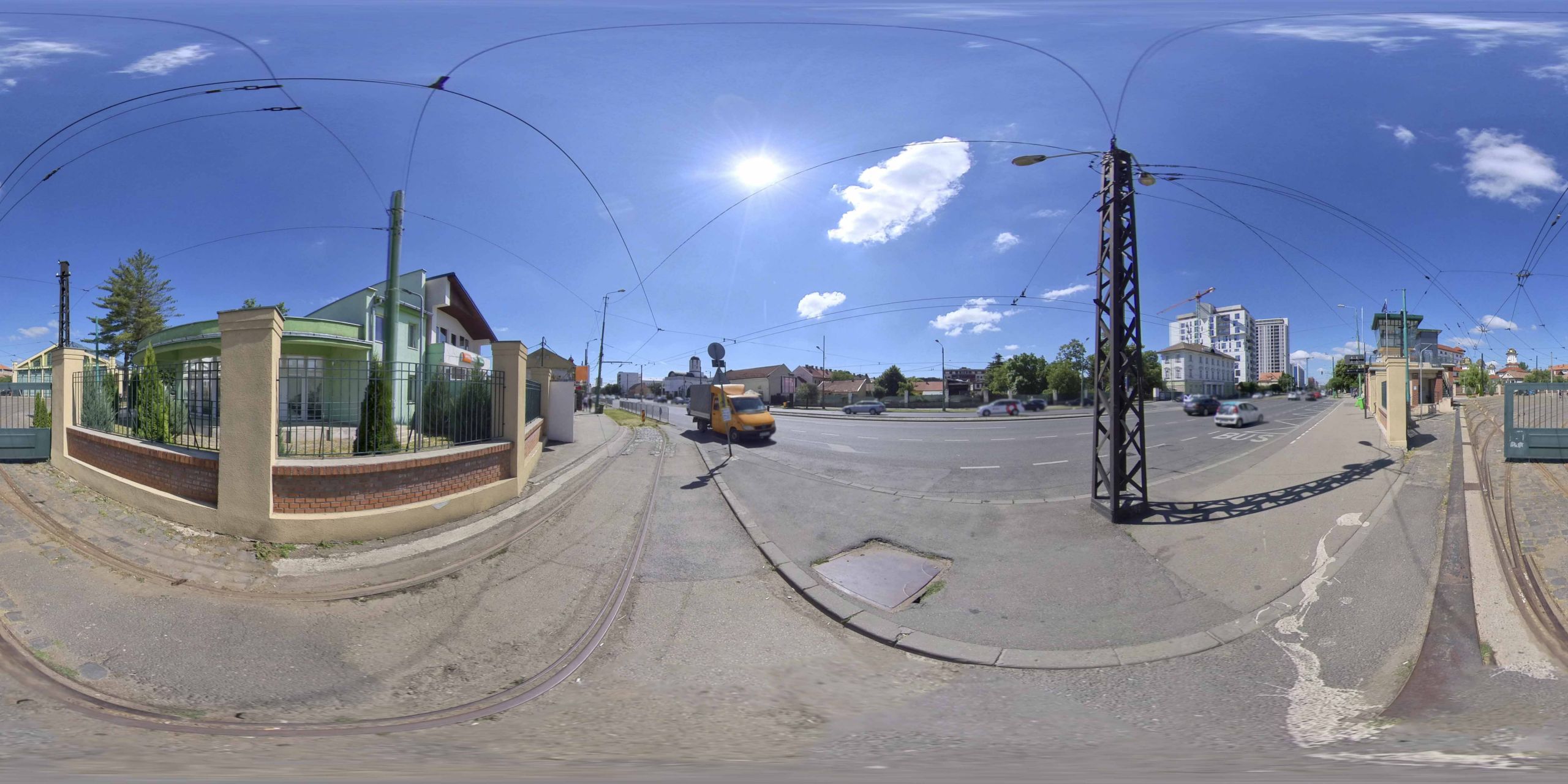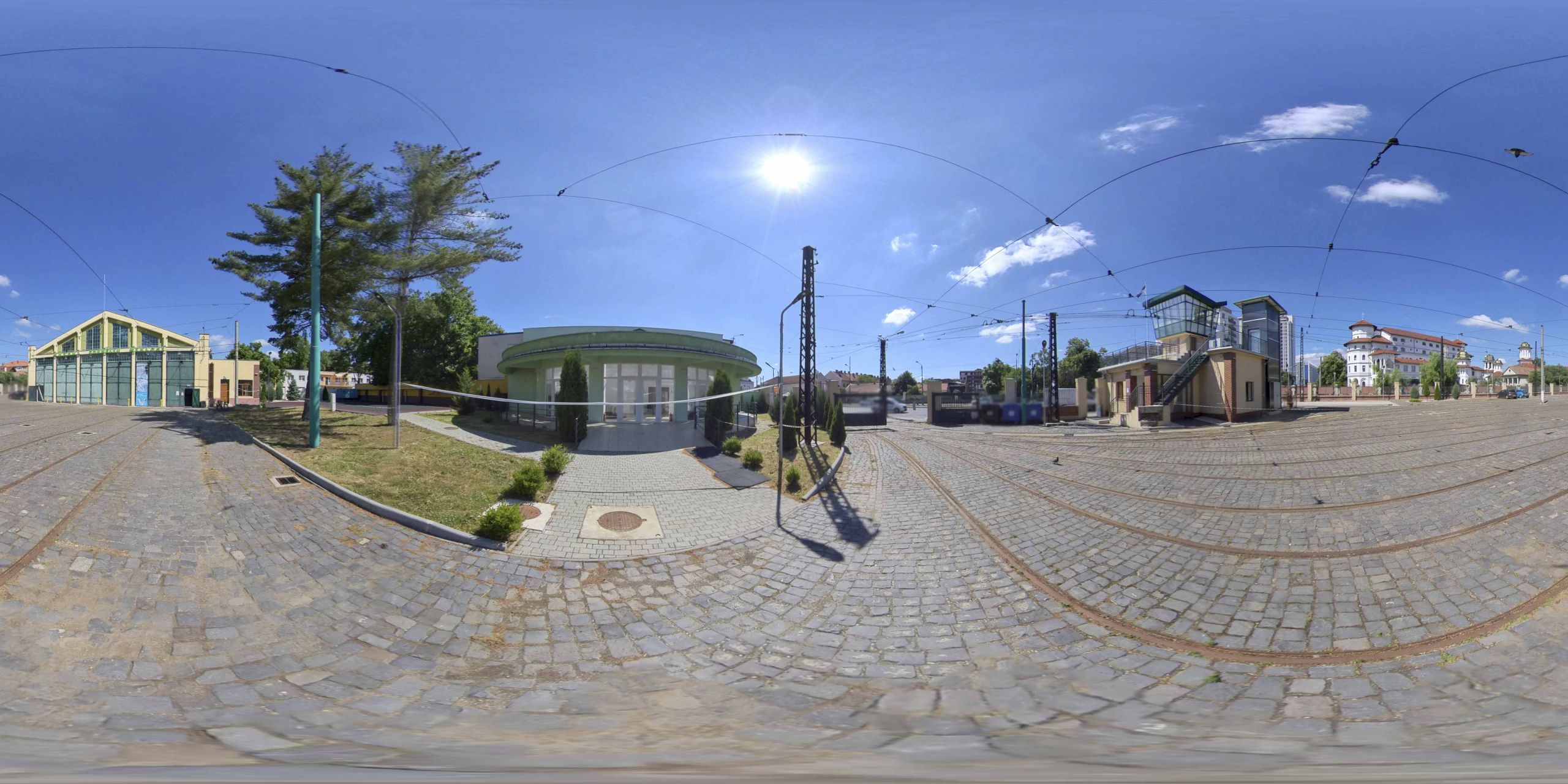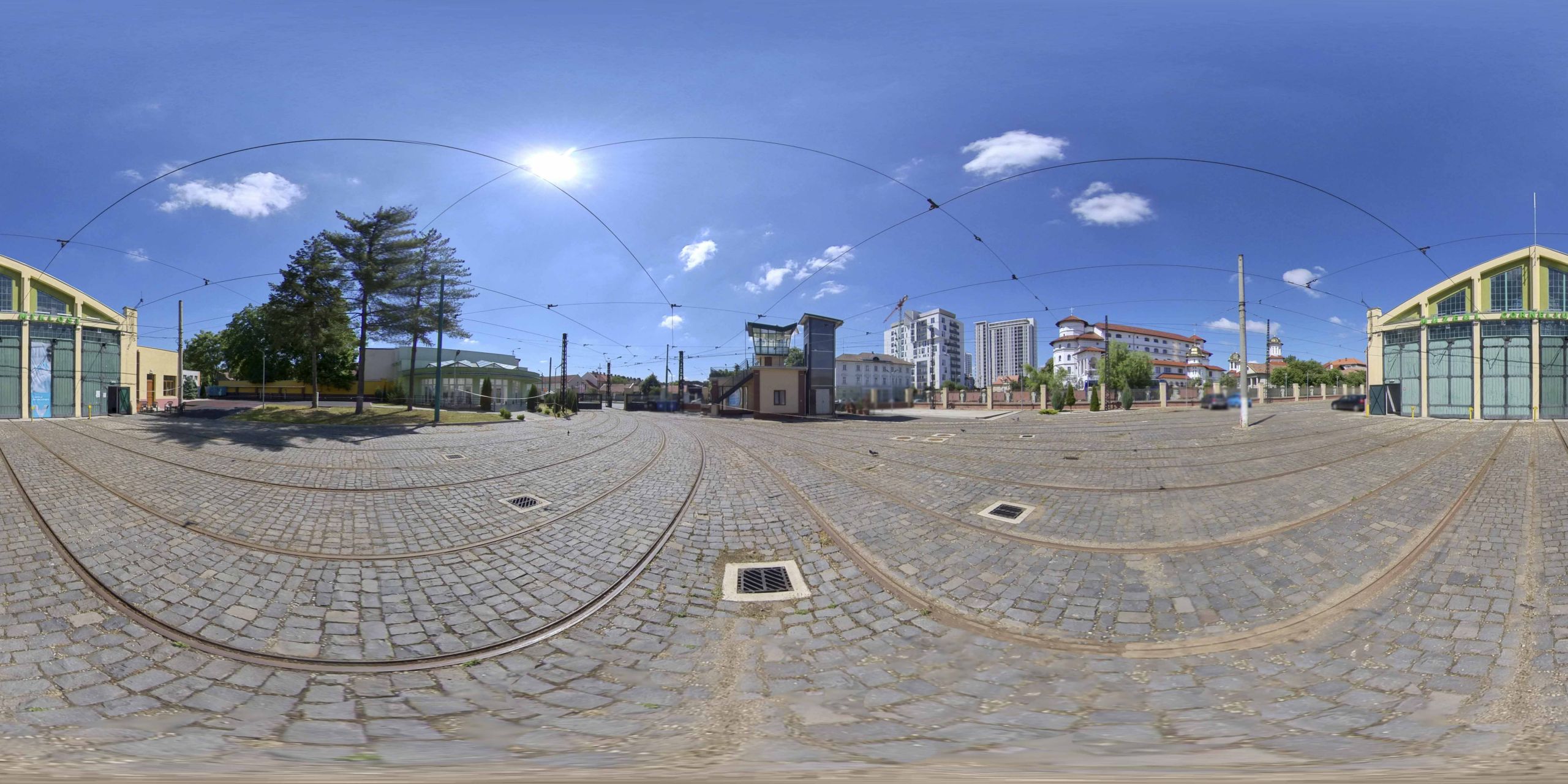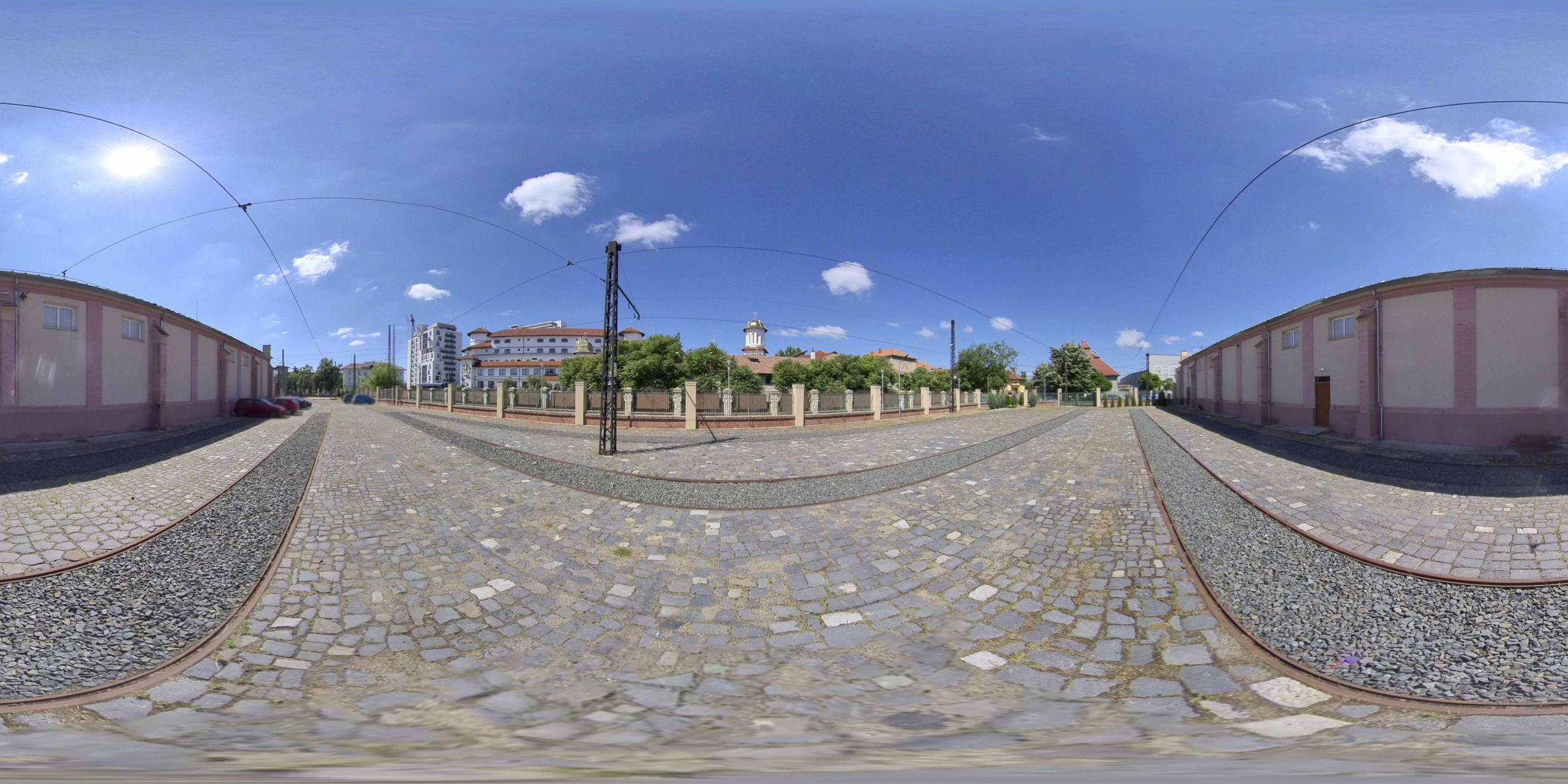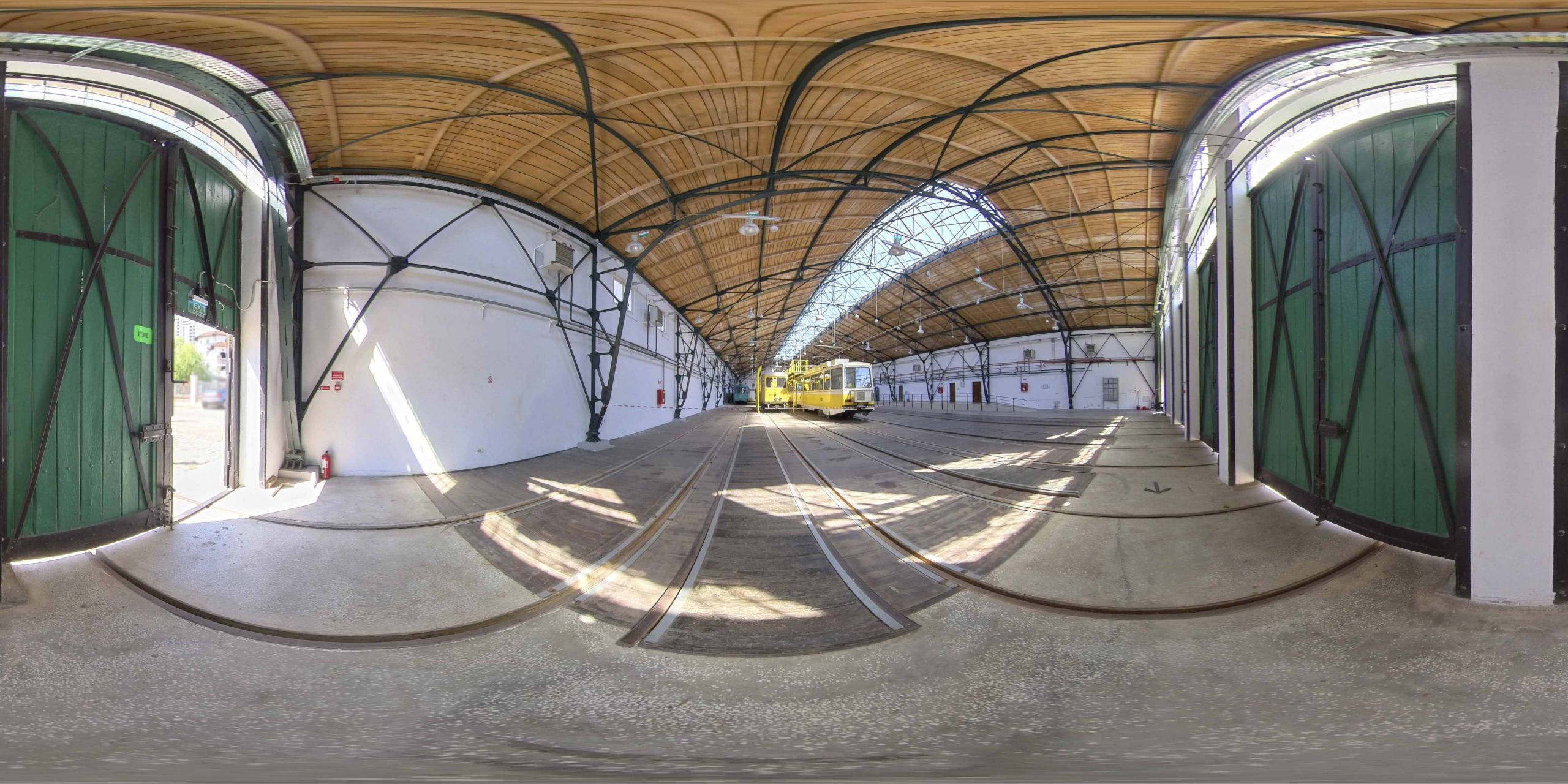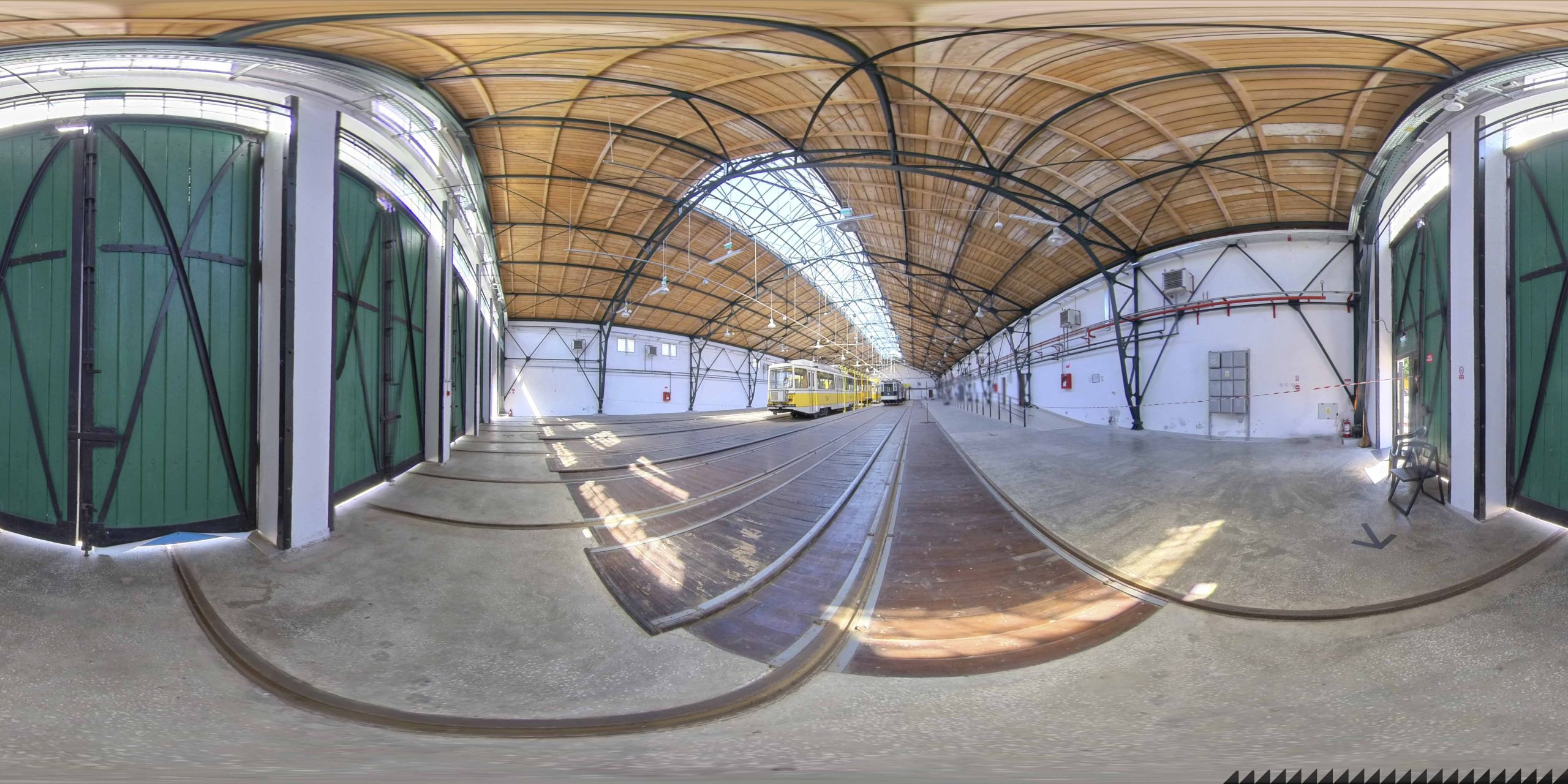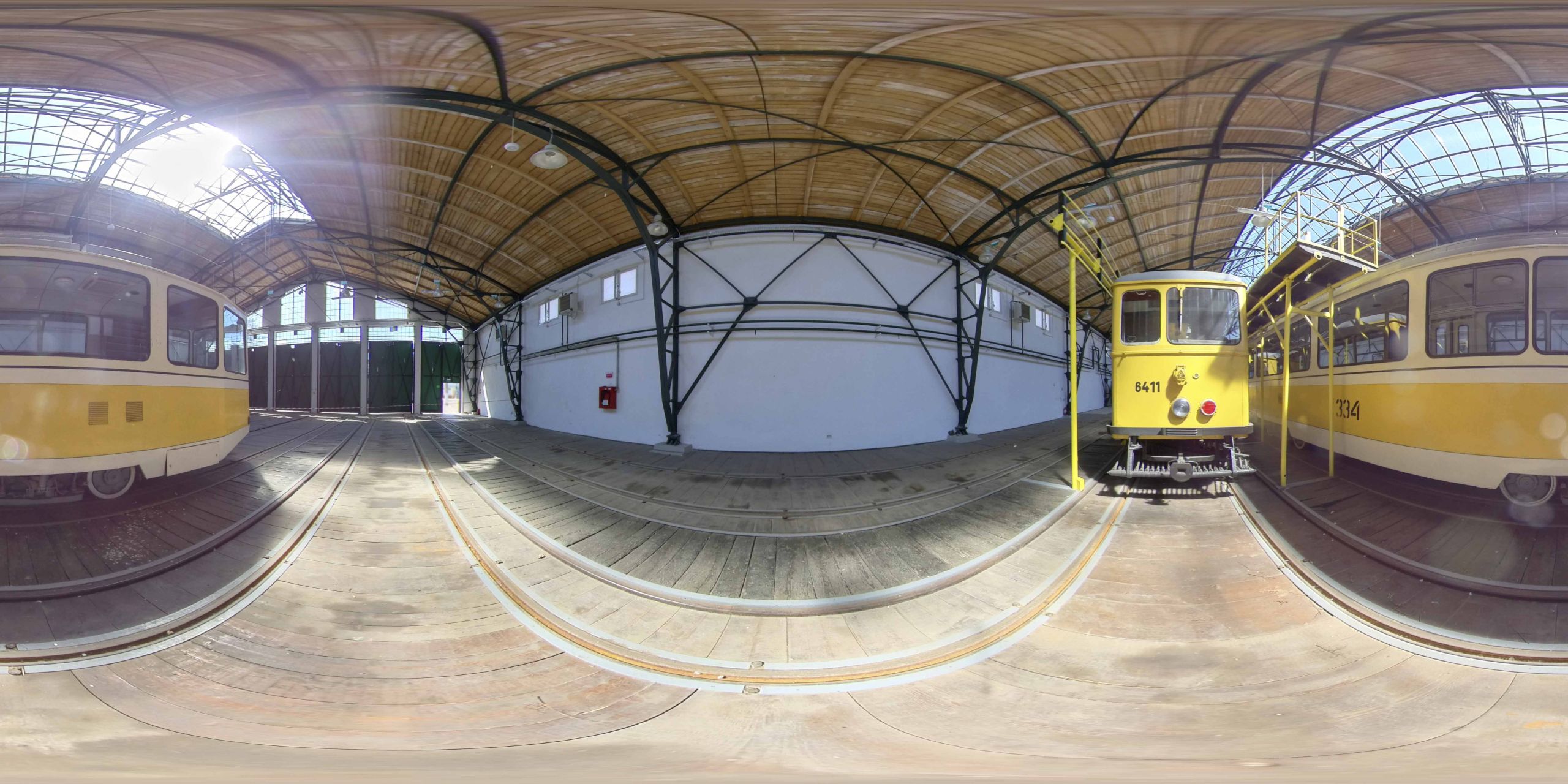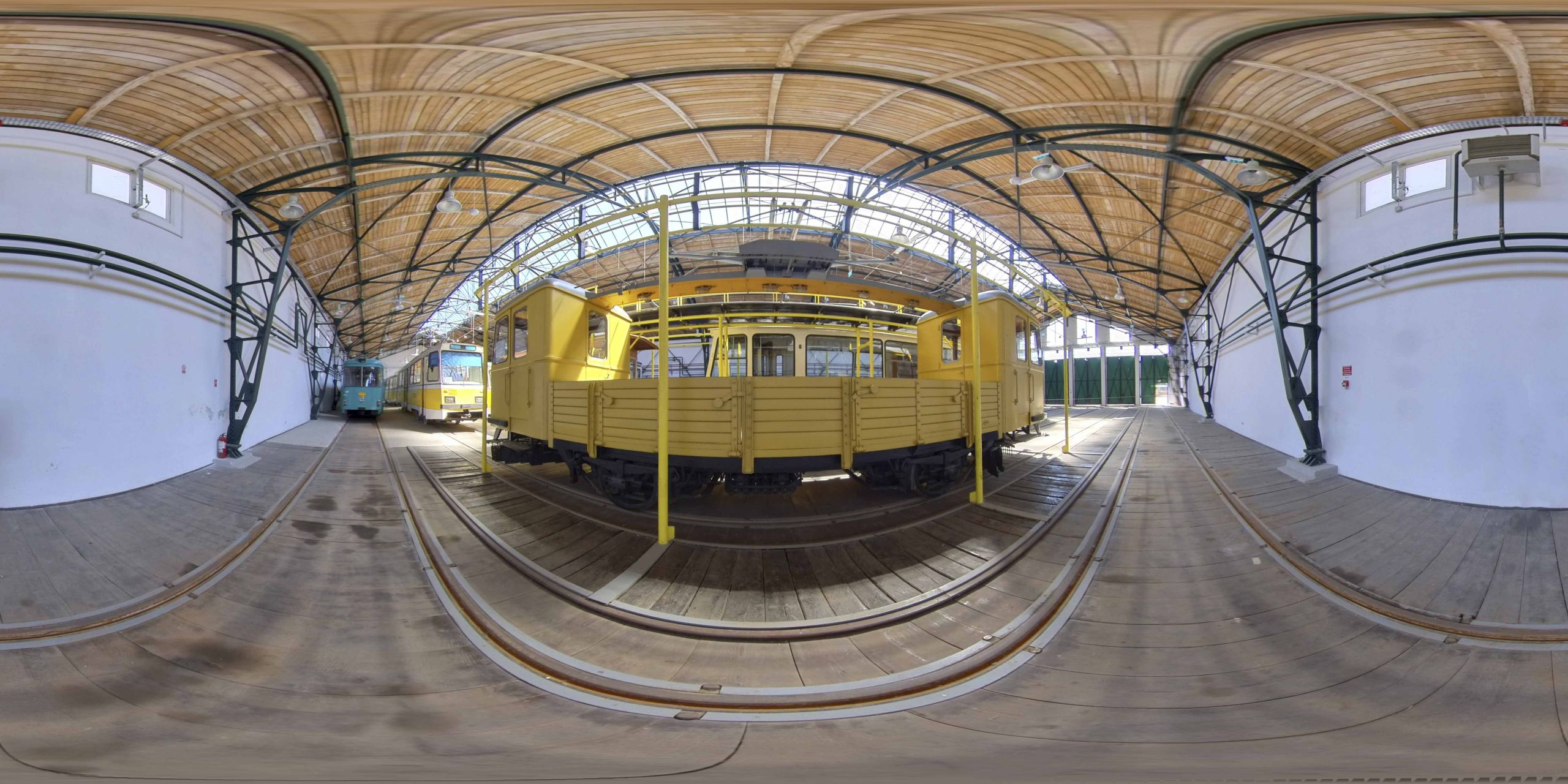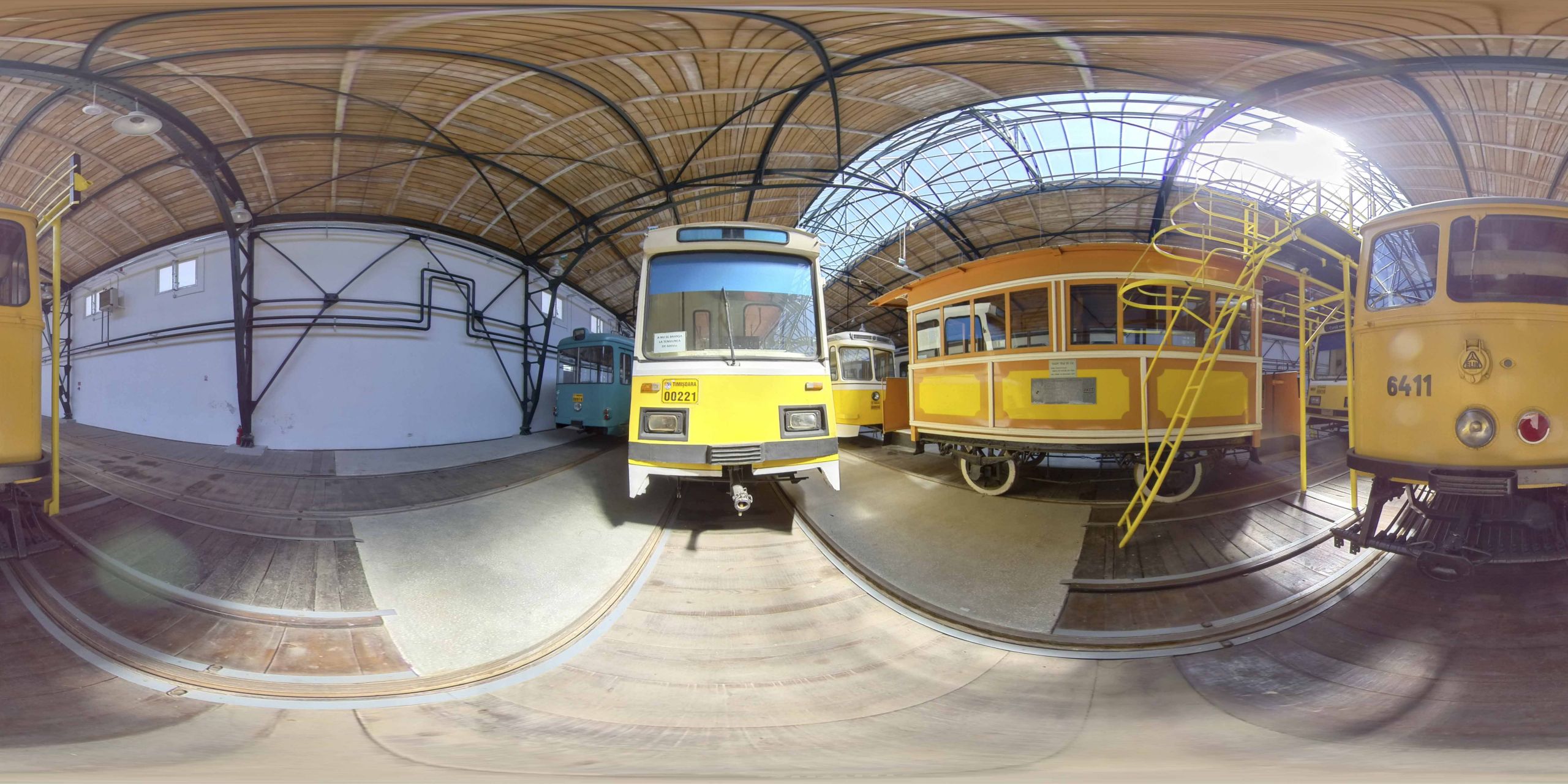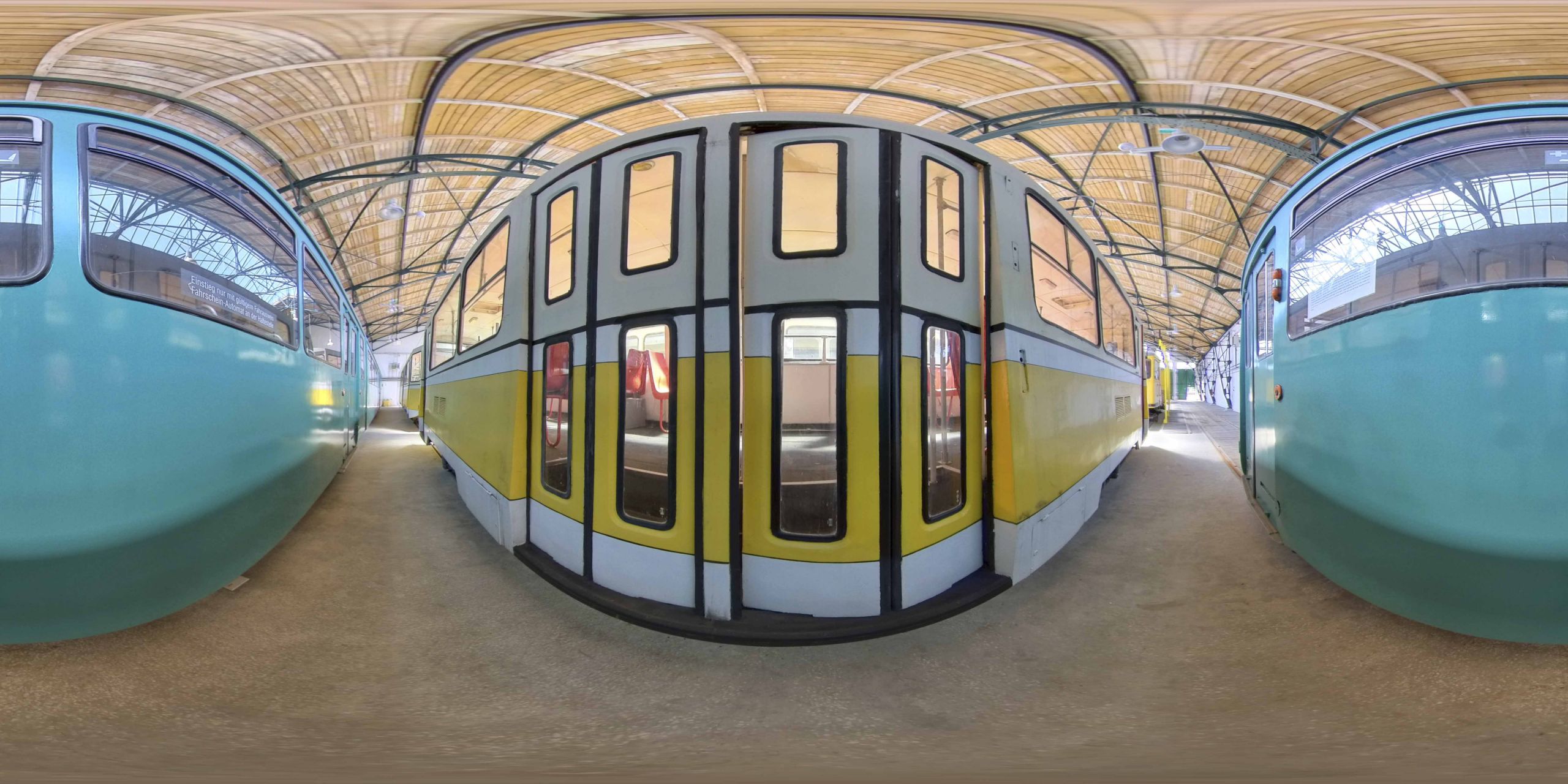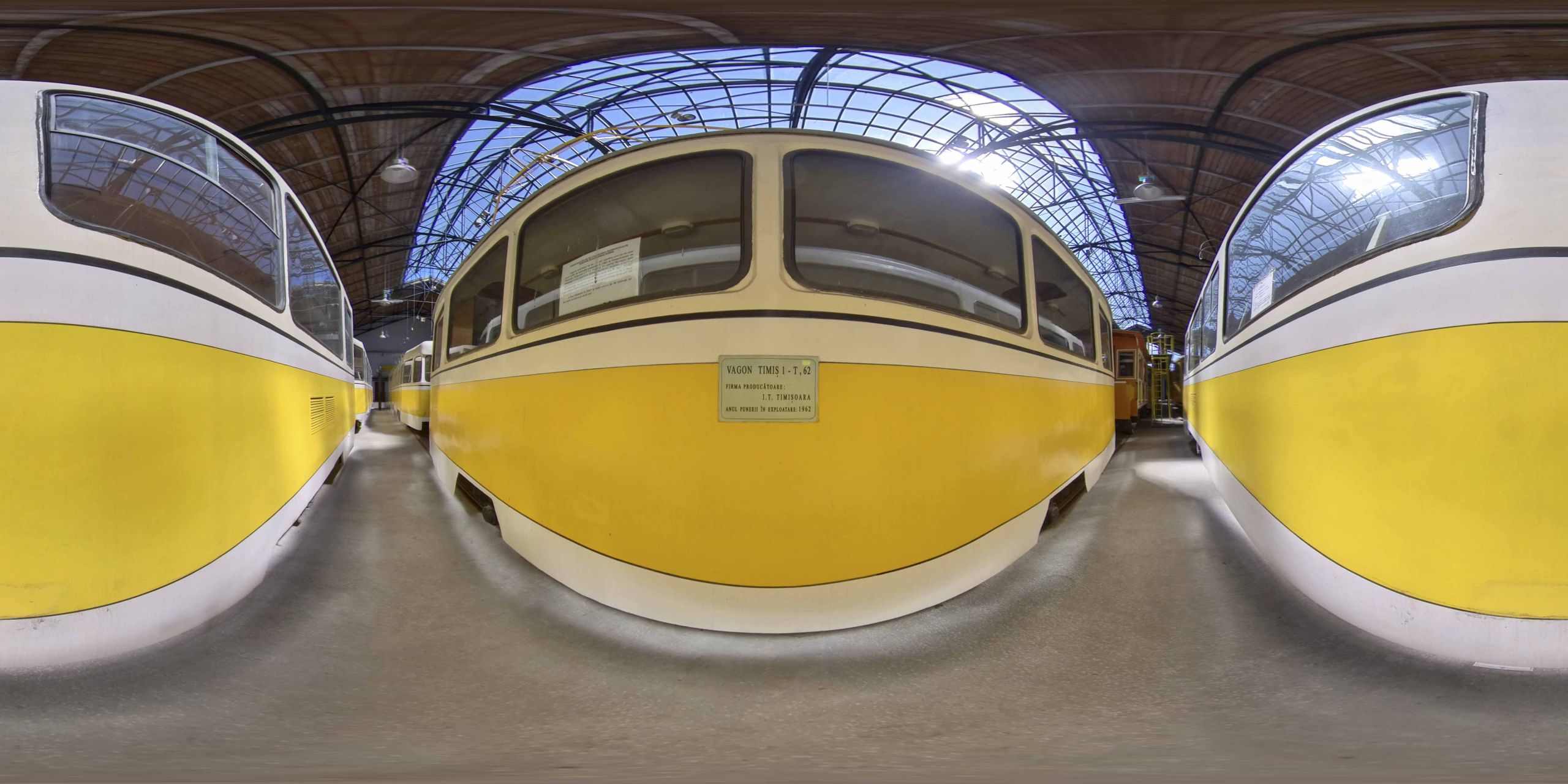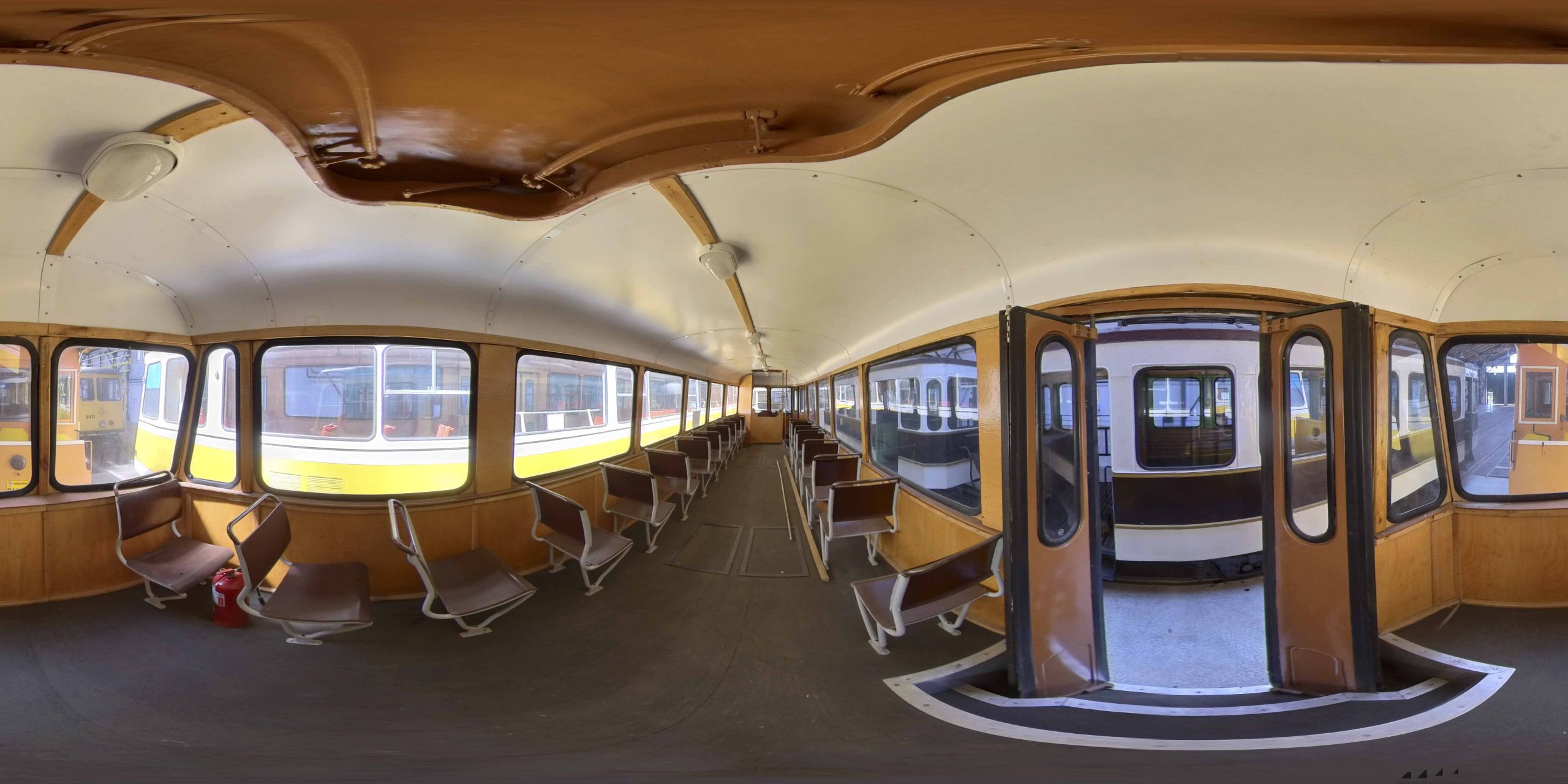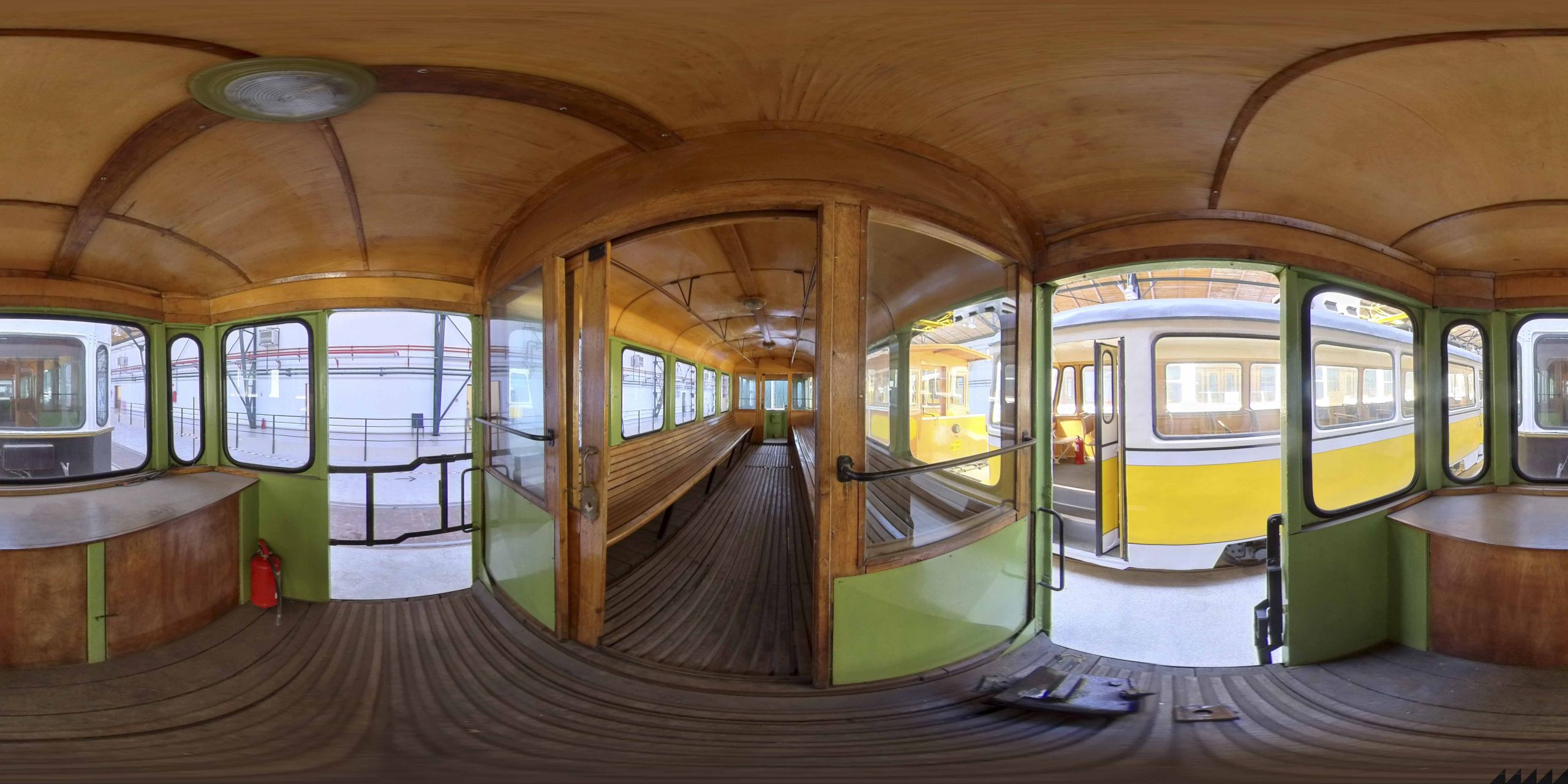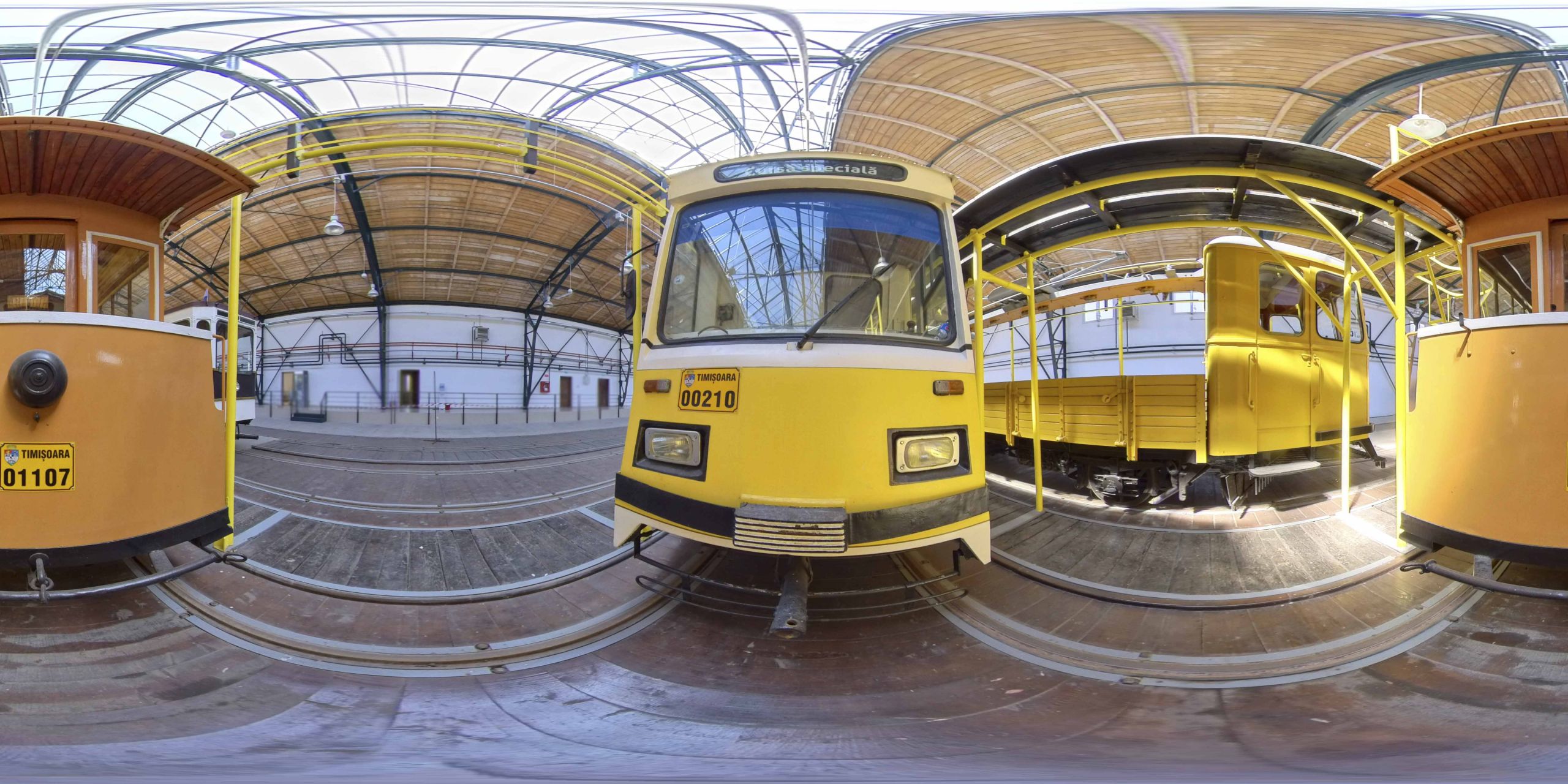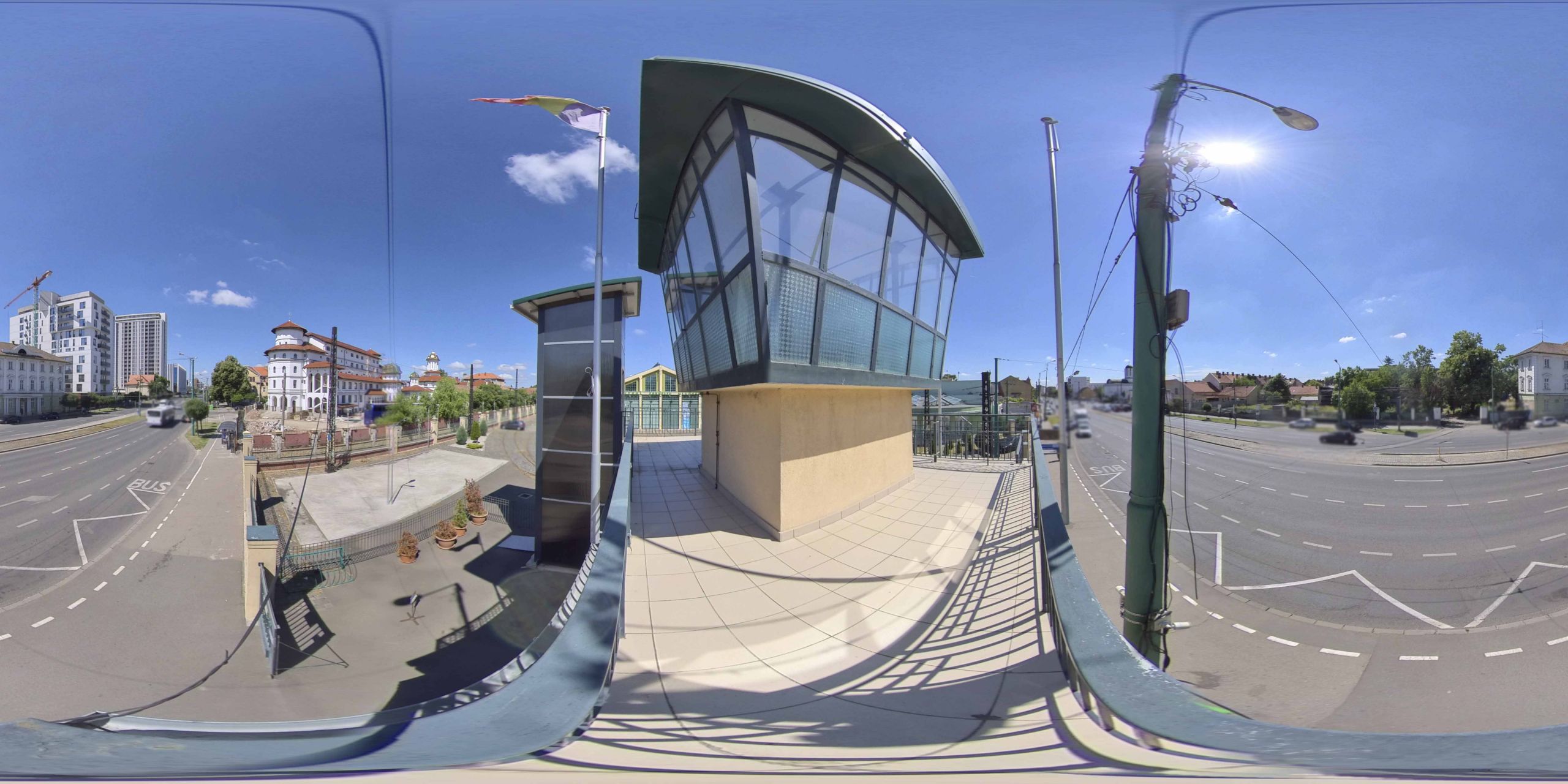Tramway Depot and Corneliu Mikloși Museum, 83 Take Ionescu Boulevard
The horse-drawn tram has been running on the streets of Timișoara since July 8, 1868, the first line put into operation being between Central Station (North Railway Station) and the center of Timișoara. In 1899, the electric traction tram was introduced.
Listen to the audio version.
The horse-drawn tram has been running on the streets of Timișoara since July 8, 1868, the first line put into operation being between the Central Station (North Station) and the center of Timișoara. In 1899 the electric traction tram was introduced while the production of trams started in 1920.
In 1868, the first shed for 24 wagons and horse stables was built of wood, on a yard in the center of the Fabric neighbourhood, near the Power Plant, from where it was moved for urban reasons in 1873-1874 to its current location. Here, in 1876, an existing building was arranged for the offices and home of the director of the tram company and a first 5-line shed was built in the courtyard of the house, to which was added a blacksmith's workshop for horseshoeing and a building for stables. In 1899, with the commissioning of the electric tram, the re-profiling of the fund built according to the new needs began. Between 1898 and 1899, a group of buildings called the "Central Power Plant" was built, which, at the end of the 19th century, consisted of: the management building, the wagon depot for a capacity of 25 wagons, the repair shops and a warehouse at the end of the draw. The second depot was built in 1909, adjacent to the existing one, to an identical size and configuration, enlarging on this occasion the wagon repair workshop.
A second stage of construction on the premises takes place between 1920-1926, when the set of drawers expands and is completed with new functions. After a serious fire in October 1920, which destroyed the workshops, the old warehouse and damaged the roofs of the sheds and the new warehouse, in 1921 the new workshops were built, which allowed from 1922 all the wagons of the tram company from Timişoara to be built and to be repaired here.
The third stage in the finalization of the building fund is marked by the extension of the ensemble on the other side of the street where the third tram depot was built between 1926-1927, with 6 lines and a capacity of 36 trams. Over time, the tram shed constructions have undergone a series of additions, transformations or additions of new bodies. Today, the city's tram network includes 7 lines, 122 stations, with a length of 71.4 km and a gauge of 1435 mm.
The Tram depot on Take Ionescu Boulevard, no. 83, was transformed into the “Corneliu Mikloși” Public Transport Museum, its history starting in 2000, with the establishment of the non-profit association Tram Club Banat, which includes the Timișoara Autonomous Transport Authority and the public transport companies from Arad and Reșița, with the aim of preserving and rehabilitating historic trams and studying public transport.
The museum's collection includes trams for transporting people: horse-drawn wagon, double-wagon wagons "Gemene", engine wagon Timiș T1-62, wagon Electroputere V 54, wagon ITB V58, train consisting of wagon and trailer wagon Timiș 2, Duwag tram GT8 N, along with commercial trams: Lowry wagon, snow plow wagon and grinder wagon. Tram donations were received from the Mariazell Tram Museum and the city of Vienna. Trolleybuses and buses are also preserved in the museum's collection in Timișoara.
In 2017 and 2019, the Corneliu Mikloși Museum hosted a section of the international biennial of contemporary art Art Encounters.
Bibliography:
- http://ratt.ro/ accessed in May 2021
- L. Roșiu, G. Pașcu, D. Belci, "Timișoara's Tram Depot- An Engine for the Regeneration of the Fabric Neighbourhood", 9th International Conference on Structural Analysis of Historical Constructions, Mexico, 2014.
The Tram Depot and the Corneliu Mikloși Museum
Corneliu Miklosy lived in Timişoara. He was from Covăsânţ village, near Arad. His name had been “Hungarianized”. To me, he was a managerial genius. He came to Timişoara after the Union, as the manager of the tram depot; he had studied in Budapest. I have a brochure about him at home, very interesting. For example, he would only hire peasants as tram drivers or fare collectors. Asked why, he said peasants were used to getting up early in the morning. The trams left the depot at 5.30, so you had to get up at 3.30 in the morning. And townspeople were more lordly. So he only hired peasants from the villages around the city, which generated a kind of professional pride among them. I noticed how polite they were. (...) Then, there were the technical issues, in which Timişoara excelled - European standards. Timişoara was the only city in the country that had automatic switches, Bucharest didn’t, Arad and other cities still don’t.... Miklosy built six houses for his employees near the tram depot on Tache Ionescu Street. To be close to work. That’s right. It’s true. But they were being exploited! This is what they used to say to denigrate capitalism. Huge lie. They had a brass band, they had the I.E.T house… do you know which one it is? On Imbroane Alley, towards the Small Railway Station, on the right side there’s a modern building with a turret. It had a reception hall. Did you say the IET house? Yes. Întreprinderea Electromecanică Timişoara - the Electromechanical Enterprise in Timişoara. Every tram and trolleybus had the letters IET on it. They were meeting there, there was a swimming pool ... can you imagine? Like a club.A model of civic virtue. In the ‘90s, I met an old man who was still working at the tram depot, and he told me enthusiastically: “Things are going to change here now and it’ll be like in Miklosy’s time again, there will be order and everything will be fine.” This is what’s been passed on over time, you can imagine what a strong feeling it was, something that stays in you forever! And he’s not the only one I’ve met.
Traian Constantin Novac, born in 1928 in Timișoara – excerpt from an interview by Antonia Komlosi, Timișoara 2004, The oral history and anthropology group archive, coordinated by Smaranda Vultur.
The trams were very basic, rudimentary, with only one small wagon. But they were already electrically driven. I remember very well that we needed new shoes, we had no good shoes left, we were kids. Mother took us and we all got on a tram of this kind, extremely basic, to go to the Turul footwear factory, that’s what the factory was called. It was the footwear factory that’s still there today, formerly Nikos Beloiannis. That’s what it was called, now I don’t even know the name of that footwear factory close to the cemetery, on Calea Buziaşului road. So we went there. There was a tax collector, he had a satchel, a leather bag where he kept his twisted tickets. We paid in fillers, cause we had Hungarian money. A crown equalled 100 fillers. There wasn’t much traffic. The population had been reduced. There were just a few lines, they ran across the Fabric district to the Turul factory, and in the center, across Cetate.
Oscar Schwartz, born in 1910 in Vienna – excerpt from the interview by Adrian Onică in 1999, in Timişoara, published in Memoria salvată. Evreii din Banat ieri și azi (The Saved Memory. The Jews of Banat yesterday and today), coordinated by Smaranda Vultur, Polirom Publishing House, Iași, 2002.
During that time the trams ran extraordinarily punctual! The clocks ( street clocks n.n.) were not a luxury, these were for the tram, for example, you knew that in this station there was a tram at 8.20! And you can get to the train station in twelve minutes with that tram. So you knew how to divide your time! That was very well done before the war. The first stop where it stopped was near the Theatre, then it came here in front of Lloyd's, then at the Express... then the stops were even shorter... were there so many stops in the centre? Honey, the tram was for the people, we weren't for the tram!
Elisabeta Dauerbach (Porumb), born in 1913 in Bacsko - excerpt from the interview conducted by Mihaela Sitariu in Timișoara in 2003, Archives of the Oral History and Cultural Anthropology Group, coordinated by Smaranda Vultur.
The six houses near the depot
E.B.- Football was played on waste ground, between the streets. We played football like this: Baader Street, in fact, Six Houses , that was the name by which our group was known, from here, by children, kids, from then on, we usually played with Tapia Street, a street closer to the old Citadel, already. Then with Telegrafului Street, an authentic suburban/periphery street, near the Fabric district... Or with those from the Union Square...
- But weren't they a bit far away?
– - It wasn't that far, because Six Houses was an interference zone. Opposite the block where I was living was the old tram depot, whose windows were always being smashed by the slingshots of the local children, who were a bit unrestrained, as we were then... So the Six Houses marked a kind of border between the Fabric district, and then they were even part of Fabric, they were two steps away from the Fabric train station (Gara Mică), and the former Take Ionescu Boulevard started a little further on, where the current police building is. That's how I knew the street, with the old name, Take Ionescu, which is also the current one. But, for a while, it was called Leontin Sălăjan. Well, from the police onwards, another area of the city began, leading towards the Unirii Square, towards the old Citadel. But, when I was a child, in the 50s, that nightmarish building of the police and the security had not yet appeared. There was, and still is, next to the present Police Inspectorate, on that side, an old building, quite long, pre-war, with a scarlet, brownish, rather shabby facade. We had, with the ones from there, we of Six Houses , relations of friendship and adversity, depending on the ... "geostrategic situation" in the area... I think that building was once intended to provide workers working at ILSA service apartments. But further along the "boulevard", on both sides, there were only a few slightly more good looking houses, kind of like villas; in some, the occupying Soviet officers and their families lived for some time.. And there was a lot of open space... On that side, there was a lot of open field, where you could still see, grazing, perfectly integrated into the landscape, small herds of cows, but also groups of children chasing the ball... There were no cars or trolleybuses. They were circulating only on one lane, on the other side, where a shopping complex had appeared just opposite. Around the same time, in the middle of the 60s, the communist units were built, on both sides, in fact the new area of units appeared, the Tipografilor Area.
(…)
- But here at Six Houses, were you visiting with your neighbours?
EUGEN BUNARU: - Yes, some neighbours used to come, some of my sister's classmates used to come, during high school, Viorel Marineasa used to come frequently to my house, we were classmates... I used to go to him as well, he lived on Tigru Street, in the Fabric district. How to put this, my father was sick until he died, he suffered from a pulmonary T.B.C., at that time it was already a treatable disease, there were antibiotics, but he had some complications... Being retired from illness, having to follow a treatment, even at home, that atmosphere probably left its marks, influenced ... So family visits were preferred (....)However, I would like to mention, Mrs. Balog and her husband, Mr. Balog, they came to visit us quite often. They lived in the next block, also here, at Six Houses. They were a Hungarian family; they had no children. She, Mrs. Balog, I believe, was my mother's best friend. They spoke both Romanian and Hungarian. She died sometime in the 60s of cancer. She was an extraordinarily kind woman even to us, the children. She always brought something for us when she came to visit my mother. Children have this predisposition, to be given little gifts, little presents. She would bring us sweets, cookies. We remained with some photographs, some beautiful pictures, Catholic so to speak, of the Saint Mary and Jesus, I have them somewhere, in a box... So we used to visit with this family and my father had also a very good friend, Mr. Crașovan, that was his name, who lived on Take Ionescu street, here, nearby, in a house opposite the police station, where a strange old man was living, a music teacher, I was seeing him in the evenings, at a kind of lamp with a lampshade, studying musical notes, and it seemed to me that he had a sort of a faustian look, grey hair and glasses, always bent over some papers like an alchemist, probably some musical scores. Mr. Chirvase, that was his name, a Greek name, probably, originally.
Eugen Bunaru (born in Timișoara 1945). Excerpts from the interview conducted by Aurora Dumitrescu in 2004 in Timișoara. The oral history and anthropology group archive, coordinated by Smaranda Vultur.
Corneliu Miklosy lived in Timişoara. He was from Covăsânţ village, near Arad. His name had been “Hungarianized”. To me, he was a managerial genius. He came to Timişoara after the Union, as the manager of the tram depot; he had studied in Budapest. I have a brochure about him at home, very interesting. For example, he would only hire peasants as tram drivers or fare collectors. Asked why, he said peasants were used to getting up early in the morning. The trams left the depot at 5.30, so you had to get up at 3.30 in the morning. And townspeople were more lordly. So he only hired peasants from the villages around the city, which generated a kind of professional pride among them. I noticed how polite they were. (...) Then, there were the technical issues, in which Timişoara excelled - European standards. Timişoara was the only city in the country that had automatic switches, Bucharest didn’t, Arad and other cities still don’t.... Miklosy built six houses for his employees near the tram depot on Tache Ionescu Street. To be close to work. That’s right. It’s true. But they were being exploited! This is what they used to say to denigrate capitalism. Huge lie. They had a brass band, they had the I.E.T house… do you know which one it is? On Imbroane Alley, towards the Small Railway Station, on the right side there’s a modern building with a turret. It had a reception hall. Did you say the IET house? Yes. Întreprinderea Electromecanică Timişoara - the Electromechanical Enterprise in Timişoara. Every tram and trolleybus had the letters IET on it. They were meeting there, there was a swimming pool ... can you imagine? Like a club.A model of civic virtue. In the ‘90s, I met an old man who was still working at the tram depot, and he told me enthusiastically: “Things are going to change here now and it’ll be like in Miklosy’s time again, there will be order and everything will be fine.” This is what’s been passed on over time, you can imagine what a strong feeling it was, something that stays in you forever! And he’s not the only one I’ve met.
Traian Constantin Novac, born in 1928 in Timișoara – excerpt from an interview by Antonia Komlosi, Timișoara 2004, The oral history and anthropology group archive, coordinated by Smaranda Vultur.
The trams were very basic, rudimentary, with only one small wagon. But they were already electrically driven. I remember very well that we needed new shoes, we had no good shoes left, we were kids. Mother took us and we all got on a tram of this kind, extremely basic, to go to the Turul footwear factory, that’s what the factory was called. It was the footwear factory that’s still there today, formerly Nikos Beloiannis. That’s what it was called, now I don’t even know the name of that footwear factory close to the cemetery, on Calea Buziaşului road. So we went there. There was a tax collector, he had a satchel, a leather bag where he kept his twisted tickets. We paid in fillers, cause we had Hungarian money. A crown equalled 100 fillers. There wasn’t much traffic. The population had been reduced. There were just a few lines, they ran across the Fabric district to the Turul factory, and in the center, across Cetate.
Oscar Schwartz, born 1910, Vienna - excerpt from an interview conducted by Adrian Onică in Timișoara in 1999, published in Memoria salvată, Evreii din Banat ieri și azi, coordinated by Smaranda Vultur, Polirom Publishing House, Iași, 2002.
